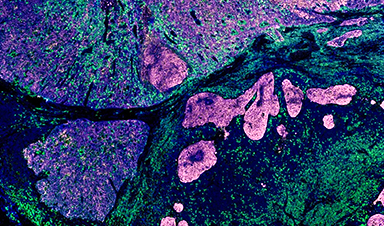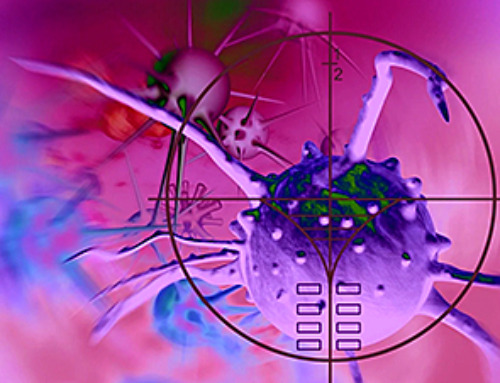A study in Scientific Reports evaluated a photoacoustic polydopamine-indocyanine green (PDA-ICG) nanoprobe for detecting senescent cells. Senescent cells play a role in tumor progression and therapeutic resistance, with potential adverse effects such as inflammation and tissue disruption. The PDA-ICG nanoprobe offers a method for identifying these cells, with implications for cancer diagnostics and treatment.
Background
Cellular senescence is a stable cell cycle arrest triggered by stressors such as DNA damage, oxidative stress, and oncogenic signaling. Senescent cells produce pro-inflammatory cytokines, growth factors, and proteases, collectively known as the senescence-associated secretory phenotype (SASP).
This phenomenon contributes to tumor progression and age-related diseases. Accurately identifying and visualizing these cells in vivo is crucial for understanding their role in cancer biology and developing targeted therapies.
Traditional methods for detecting senescent cells, such as β-galactosidase staining and immunohistochemistry, have limitations in terms of specificity and sensitivity. The introduction of advanced imaging techniques, particularly those utilizing nanoprobes, offers a promising avenue for enhancing the detection of senescent cells.
The PDA-ICG nanoprobe combines the photothermal properties of polydopamine with the fluorescence of indocyanine green, enabling both photoacoustic imaging and fluorescence imaging. This dual functionality is expected to improve the visualization of senescent cells.
The Current Study
The study used experimental techniques to evaluate the performance of the PDA-ICG nanoprobe. Human cancer cell lines, A549 and SK-MEL-103, were cultured and treated with varying concentrations of PDA-ICG to assess cell viability and nanoprobe internalization.
The MTS assay measured cell viability after treatment, and flow cytometry assessed nanoprobe internalization in live cells. After treatment, cells were washed to remove excess probes and stained with DAPI for flow cytometric analysis. Data were processed using FlowJo software to identify live, single-cell populations with internalized nanoprobe.
Cells were treated with chemotherapeutic agents, cisplatin and palbociclib, for a specified duration. After drug removal, the cells were stained with β-galactosidase to identify senescent cells. RNA extraction and quantitative real-time PCR (RT-qPCR) were performed to measure the expression levels of senescence-associated genes.
Western blotting was conducted to analyze protein expression related to senescence, including p21 and pRb. Confocal microscopy was utilized to visualize the cellular localization of the PDA-ICG nanoprobe and assess its potential for imaging senescent cells.
Results and Discussion
The results showed that the PDA-ICG nanoprobe was successfully internalized into cancer cells, with flow cytometry confirming significantly higher uptake in treated cells than controls. The MTS assay indicated no adverse effects on cell viability at the tested concentrations, supporting its potential for safe in vivo application.
The study also found that treatment with cisplatin and palbociclib successfully induced senescence in the respective cell lines, as evidenced by increased β-galactosidase activity. The expression of senescence-associated genes was significantly elevated in treated cells, further confirming the induction of senescence.
Confocal microscopy highlighted the PDA-ICG nanoprobe’s imaging capabilities, revealing distinct localization patterns within the cells. The nanoprobe’s dual imaging modality allowed for more precise visualization of senescent cells than traditional methods. The findings suggest that the PDA-ICG nanoprobe could serve as a valuable tool for studying the dynamics of senescence in cancer and other diseases.
The ability to visualize senescent cells in real time may facilitate the development of targeted therapies that eliminate these cells from the tumor microenvironment, potentially improving patient outcomes.
Conclusion
The study successfully demonstrated the utility of the PDA-ICG nanoprobe for detecting senescent cells in cancer. Combining the advantages of photoacoustic and fluorescence imaging, this innovative approach offers a promising strategy for enhancing the visualization of senescence in vivo. The findings underscore the importance of accurately identifying senescent cells in the context of cancer biology and therapeutic interventions.
Future research should focus on optimizing the nanoprobe for clinical applications and exploring its potential in various cancer models. The ability to monitor senescence dynamically could lead to significant advancements in cancer diagnostics and treatment, ultimately contributing to improved patient care and outcomes.
Journal Reference
Hartono, M., et al. (2024). Photoacoustic polydopamine-indocyanine green (PDA-ICG) nanoprobe for detection of senescent cells. Scientific Reports. DOI: 10.1038/s41598-024-79667-7, https://www.nature.com/articles/s41598-024-79667-7
News
Most Plastic in the Ocean Is Invisible—And Deadly
Nanoplastics—particles smaller than a human hair—can pass through cell walls and enter the food web. New research suggest 27 million metric tons of nanoplastics are spread across just the top layer of the North [...]
Repurposed drugs could calm the immune system’s response to nanomedicine
An international study led by researchers at the University of Colorado Anschutz Medical Campus has identified a promising strategy to enhance the safety of nanomedicines, advanced therapies often used in cancer and vaccine treatments, [...]
Nano-Enhanced Hydrogel Strategies for Cartilage Repair
A recent article in Engineering describes the development of a protein-based nanocomposite hydrogel designed to deliver two therapeutic agents—dexamethasone (Dex) and kartogenin (KGN)—to support cartilage repair. The hydrogel is engineered to modulate immune responses and promote [...]
New Cancer Drug Blocks Tumors Without Debilitating Side Effects
A new drug targets RAS-PI3Kα pathways without harmful side effects. It was developed using high-performance computing and AI. A new cancer drug candidate, developed through a collaboration between Lawrence Livermore National Laboratory (LLNL), BridgeBio Oncology [...]
Scientists Are Pretty Close to Replicating the First Thing That Ever Lived
For 400 million years, a leading hypothesis claims, Earth was an “RNA World,” meaning that life must’ve first replicated from RNA before the arrival of proteins and DNA. Unfortunately, scientists have failed to find [...]
Why ‘Peniaphobia’ Is Exploding Among Young People (And Why We Should Be Concerned)
An insidious illness is taking hold among a growing proportion of young people. Little known to the general public, peniaphobia—the fear of becoming poor—is gaining ground among teens and young adults. Discover the causes [...]
Team finds flawed data in recent study relevant to coronavirus antiviral development
The COVID pandemic illustrated how urgently we need antiviral medications capable of treating coronavirus infections. To aid this effort, researchers quickly homed in on part of SARS-CoV-2's molecular structure known as the NiRAN domain—an [...]
Drug-Coated Neural Implants Reduce Immune Rejection
Summary: A new study shows that coating neural prosthetic implants with the anti-inflammatory drug dexamethasone helps reduce the body’s immune response and scar tissue formation. This strategy enhances the long-term performance and stability of electrodes [...]
Scientists discover cancer-fighting bacteria that ‘soak up’ forever chemicals in the body
A family of healthy bacteria may help 'soak up' toxic forever chemicals in the body, warding off their cancerous effects. Forever chemicals, also known as PFAS (per- and polyfluoroalkyl substances), are toxic chemicals that [...]
Johns Hopkins Researchers Uncover a New Way To Kill Cancer Cells
A new study reveals that blocking ribosomal RNA production rewires cancer cell behavior and could help treat genetically unstable tumors. Researchers at the Johns Hopkins Kimmel Cancer Center and the Department of Radiation Oncology and Molecular [...]
AI matches doctors in mapping lung tumors for radiation therapy
In radiation therapy, precision can save lives. Oncologists must carefully map the size and location of a tumor before delivering high-dose radiation to destroy cancer cells while sparing healthy tissue. But this process, called [...]
Scientists Finally “See” Key Protein That Controls Inflammation
Researchers used advanced microscopy to uncover important protein structures. For the first time, two important protein structures in the human body are being visualized, thanks in part to cutting-edge technology at the University of [...]
AI tool detects 9 types of dementia from a single brain scan
Mayo Clinic researchers have developed a new artificial intelligence (AI) tool that helps clinicians identify brain activity patterns linked to nine types of dementia, including Alzheimer's disease, using a single, widely available scan—a transformative [...]
Is plastic packaging putting more than just food on your plate?
New research reveals that common food packaging and utensils can shed microscopic plastics into our food, prompting urgent calls for stricter testing and updated regulations to protect public health. Beyond microplastics: The analysis intentionally [...]
Aging Spreads Through the Bloodstream
Summary: New research reveals that aging isn’t just a local cellular process—it can spread throughout the body via the bloodstream. A redox-sensitive protein called ReHMGB1, secreted by senescent cells, was found to trigger aging features [...]
AI and nanomedicine find rare biomarkers for prostrate cancer and atherosclerosis
Imagine a stadium packed with 75,000 fans, all wearing green and white jerseys—except one person in a solid green shirt. Finding that person would be tough. That's how hard it is for scientists to [...]






















